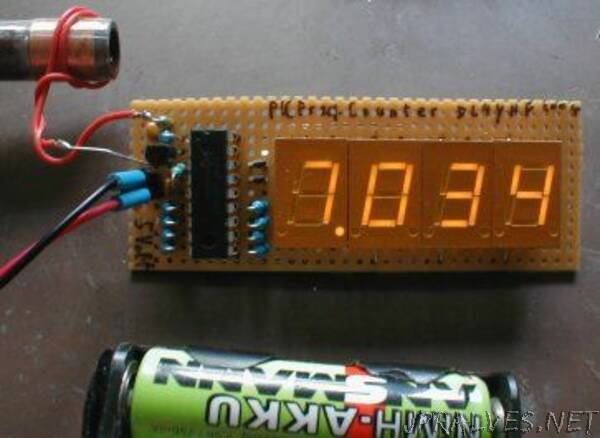
“This document describes the construction of small frequency counter with a cheap PIC microcontroller and a few seven-segment LED digits.
The main features of the frequency counter are:
- frequency range 1 Hz … 50 MHz (prototype worked up to 60 MHz but this exceeds the PIC’s timing specifications)
- four or five digits resolution (display for example x.xxx kHz, x.xxx MHz, or xx.xx MHz); or 6 digits with F8FII’s modification
- automatic range switching with different gate times
- optional addition or subtraction of a frequency offset (programmable)
- optional preamplifier for the input signal
- can be built on a single-sided ‘breadboard-style’ circuit board
- firmware available for common-cathode as well as commom-anode displays
- (2016: Not sure which of these are used by the “anonymous clones” recently sold on Ebay)
- very low component count: a PIC 16F628,
- 4 or 5 7-segment LED displays,
- a 4- or 20-MHz crystal and a few resistors,
- optionally one transistor and a few diodes to drive the 5th digit,
- optionally one other transistor for the preamplifier.
- since 2006-05: preprogrammed frequency offset for transceivers with 4.0 MHz IF
- (see the author’s experiences with “Miss Mosquita”, a 40 meter QRP transceiver)
- optional (configurable) power-saving mode which automatically turns the display off
- if the frequency didn’t change significantly within 15 seconds”
